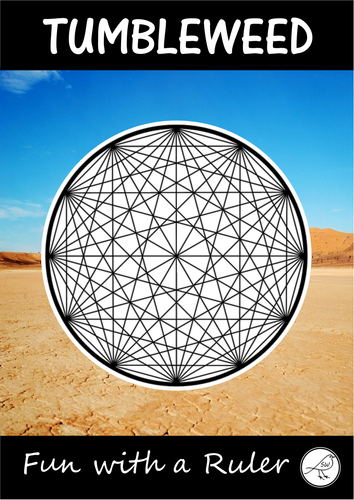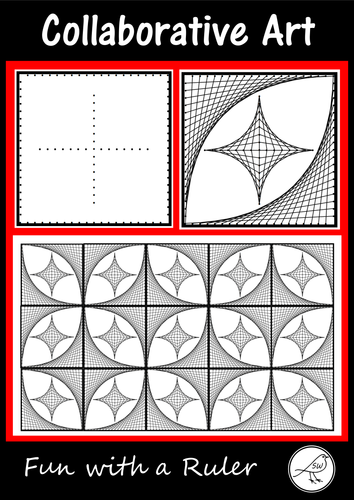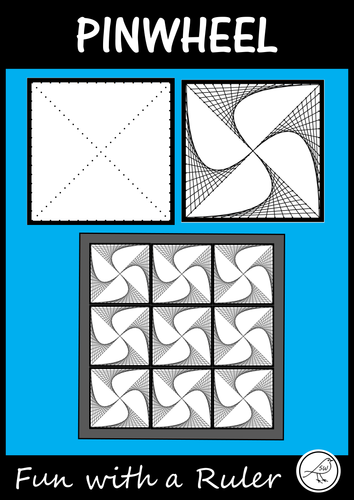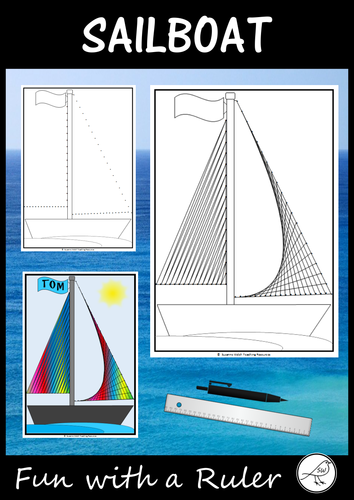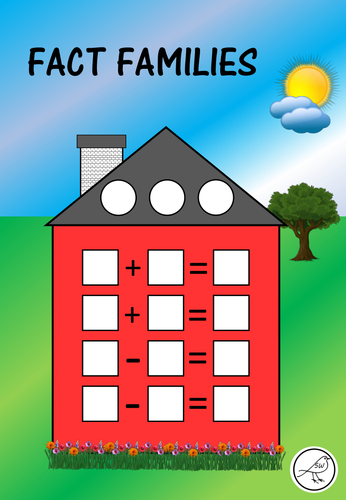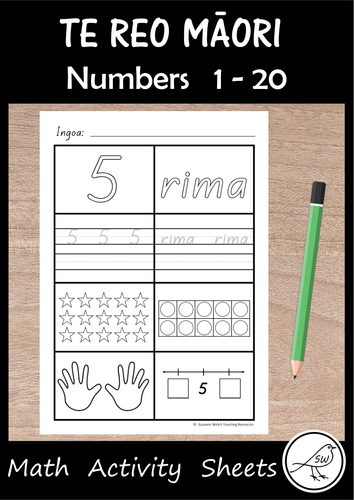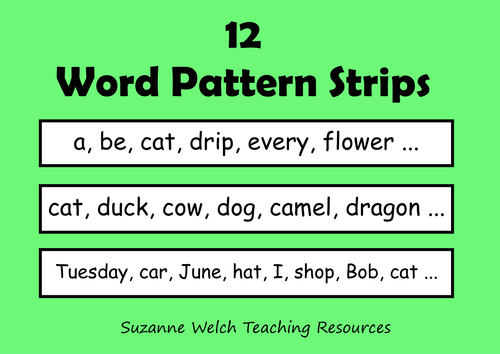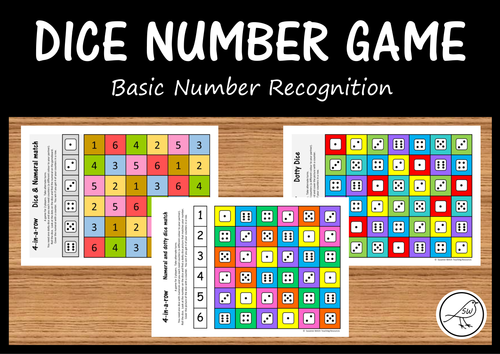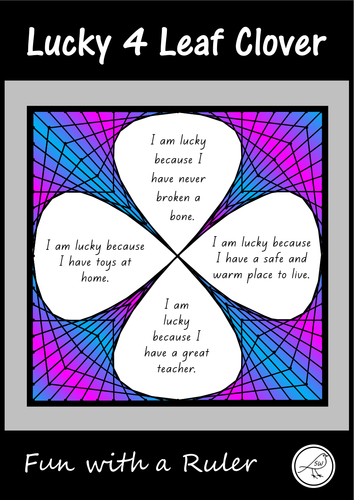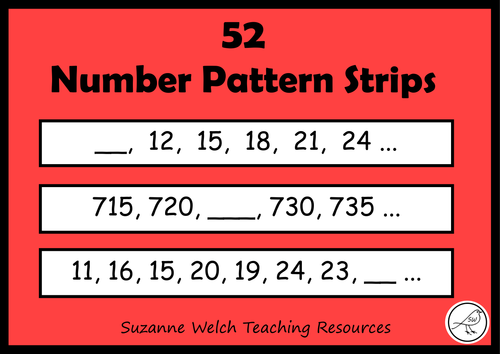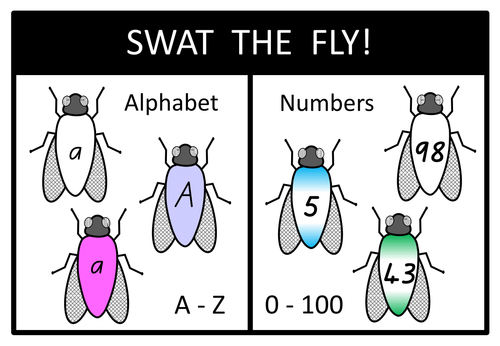
377Uploads
147k+Views
9k+Downloads
Maths for early years

Math Art - Fun with a Ruler - Tumbleweed
A ‘Fun with a Ruler’ math/art project for your students. This project involves your students ruling straight lines between 2 dots on a template. When they have finished drawing all of the lines they can give their artwork some colour.
Included:
♦ Template
♦ Example
♦ Instructions
♦ Teacher notes
Level of Difficulty:
Your students need to be able to use a ruler to draw straight lines between 2 points. The design can look more complicated than it actually is. Concentration is required, but the actual process is not difficult.
Instructions:
Simple, clear, easy-to-follow instructions are provided. One instruction per page (image and a sentence). Display the instructions via a data projector if you have access to one. Otherwise print and enlarge them and/or demonstrate on an enlarged template.
Equipment:
You need a ruler and a pen (black works best). Something to colour with (eg coloured pencils, watercolours, felt tip markers, chalk pastels, dye, etc)
Size:
The circle is approximately18cm in diameter. Designed on A4 size paper.
Keywords: string art, math, geometry, patterns, lines, ruler.
© Suzanne Welch Teaching Resources

Fun with a Ruler - Collaborative Art Project using Parabolic Curves
A ‘Fun with a Ruler’ art project that involves drawing parabolic curves (curves that are made by drawing a series of straight lines).
This project involves your students ruling straight lines between 2 dots on a template. When they have finished drawing all of the lines they can give their artwork some colour.
Each student completes a square. Join the squares together to make an eye-catching display (see image for example).
Included:
♦ Template – black dots
♦ Template – light grey dots
♦ Example
♦ Display suggestion
♦ Instructions
♦ Teacher notes
Level of Difficulty:
Your students need to be able to use a ruler to draw straight lines between 2 points (the curves are made with straight lines … it’s like magic!). The designs can look more complicated than they actually are. Concentration is required, but the actual process is not difficult.
Instructions:
Simple, clear, easy-to-follow instructions are provided. One instruction per page (image and a sentence). Display the instructions via a data projector if you have access to one. Otherwise print and enlarge them and/or demonstrate on an enlarged template.
Equipment:
You need a ruler and a pen (black works best). Something to colour with (eg coloured pencils, watercolours, felt tip markers, chalk pastels, dye, etc)
Size:
Each square measures approximately 18.5cm x 18.5cm. Designed on A4 size paper.
Keywords: string art, math, geometry, patterns, parabolic curves.
© Suzanne Welch Teaching Resources

Math Art – Parabolic Curves - Pinwheel
A ‘Fun with a Ruler’ math/art project that uses parabolic curves to make an interesting ‘pinwheel’ design.
This project involves your students ruling straight lines between 2 dots on a template. When they have finished drawing all of the lines they can give their artwork some colour.
Included:
♦ Template (black or grey dots)
♦ Example
♦ Instructions
♦ Teacher Notes
There are 2 different templates to choose from. One of them is more suitable for older students as more care needs to be taken in ‘congested’ areas of the design. The designs are the same (one just has more dots/lines).
Level of Difficulty:
Your students need to be able to use a ruler to draw straight lines between 2 points (the curves are made with straight lines … it’s like magic!). The designs can look more complicated than they actually are. Concentration is required, but the actual process is not difficult.
Instructions:
Simple, clear, easy-to-follow instructions are provided. One instruction per page (image and a sentence). Display the instructions via a data projector if you have access to one. Otherwise print and enlarge them and/or demonstrate on an enlarged template.
Equipment:
You need a ruler and a pen (black works best). Something to colour with (eg coloured pencils, watercolours, felt tip markers, chalk pastels, dye, etc)
Size:
The design is 17.5cm x 17.5cm. Designed on A4 size paper.
Keywords: string art, math, geometry, patterns, parabolic curves
© Suzanne Welch Teaching Resources

Math Art - Fun with a Ruler - Sailboat
A ‘Fun with a Ruler’ math/art project for your students. This project involves your students ruling straight lines between 2 dots on a template. One set of lines makes a parabolic curve and the other set makes a zig-zag pattern. When they have finished drawing all of the lines they can give their artwork some colour.
Included:
♦ Template
♦ Example – black/white
♦ Example - coloured
♦ Instructions
♦ Teacher notes
Level of Difficulty:
Your students need to be able to use a ruler to draw straight lines between 2 points (the curves are made with straight lines … it’s like magic!). The designs can look more complicated than they actually are. Concentration is required, but the actual process is not difficult.
Instructions:
Simple, clear, easy-to-follow instructions are provided. One instruction per page (image and a sentence). Display the instructions via a data projector if you have access to one. Otherwise print and enlarge them and/or demonstrate on an enlarged template.
Equipment:
You need a ruler and a pen (black works best). Something to colour with (eg coloured pencils, watercolours, felt tip markers, chalk pastels, dye, etc)
Designed on A4 size paper.
Keywords: string art, math, geometry, patterns, parabolic curves, water, ocean, wind, sport
© Suzanne Welch Teaching Resources

Family of Facts / Fact Families - houses
Resources for teaching family of facts in math lessons.
Included:
♦ Addition/Subtraction – house and worksheet
♦ Multiplication/Division – house and worksheet
♦ Ice-cream craft and worksheet
The Houses:
The houses are provided in colour, grey, and black/white. Laminate the house and then use it as a teaching tool during lessons (write and wipe). Write 3 family numbers in the circles in the roof.
The Worksheets:
Two worksheets are provided. One with four houses and the other with 6 houses. Write 3 family numbers in the circles prior to photocopying.
The Ice-cream:
Create a 4-scoop ice-cream showing a family of facts.
**********************************************************************
© Suzanne Welch Teaching Resources

Math - Ten Frame Train
A ten frame train that is suitable for using in your math lessons or having as a display on your classroom wall.
Included:
♦ Train engine
♦ Carriages - ten frames 0-10
♦ Carriages - ten frames 0-10 with numeral written at the top
1 engine/carriage per page.
**********************************************************************
© Suzanne Welch Teaching Resources

Te Reo Māori – Math Activity Sheets – Numbers 1-20
A set of number activity sheets for use during math lessons when working on numbers 1-20.
The worksheets for numbers 1-10 are slightly different from the worksheets for numbers 11-20.
Worksheets 1-10
♦ Write your name.
♦ Colour the numeral.
♦ Colour the word.
♦ Trace the numeral; write the numeral independently.
♦ Trace the word; write the word independently.
♦ Show a group by circling and colouring the stars.
♦ Show the number on the tens frame (colour the circles).
♦ Colour the correct number of fingers.
♦ Write the number that comes before / after.
Worksheets 11-20
♦ Write your name.
♦ Colour the numeral.
♦ Colour the words.
♦ Trace the numerals and words.
♦ Write the numerals and words independently.
♦ Show a group by circling and colouring the stars.
♦ Show the number on the tens frames (colour the circles).
♦ Fill in the 6 missing numbers on the number line.
**********************************************************************
© Suzanne Welch Teaching Resources

Math Pattern Strips (Algebra) - word and letter patterns
A fun set of word pattern strips. Use as a literacy task or make it part of your algebra unit when looking at patterns in math.
This resource contains
12 x Strips to identify the pattern and continue it.
12 x Strips to find the missing word
Pattern reference (teacher guide)
Student recording sheet and teacher answer sheet (for the ‘find the missing word’ strips)
A blank template for students to make up their own word patterns.
The set of word pattern strips are provided in 2 different formats. Simply print the format you want to use. For example:
• Cat, duck, cow, dog, camel, dragon…
• Cat, duck, ___, dog, camel, dragon …
So there are 12 different patterns and 24 different strips.
There are many different possible answers for all of the word patterns in this resource, but the answer must follow the ‘rule’. For example, in the list above, any animal that begins with the letter ‘c’ would fit in the gap.
© Suzanne Welch Teaching Resources

Dice Number Games - Basic number recognition
Basic Number Recognition - using a dice (1-6)
4-in-a-row Gameboards
♦ Game 1 – recognising dotty patterns on a dice.
♦ Game 2 – matching a dotty dice picture with a numeral.
♦ Game 3 – matching a numeral with a picture of a dotty dice.
Game 1 – Dotty Dice:
A game for 2 players. Take alternate turns. You need one dotty dice and you each need counters (a different colour to your partner). Roll the dice. Find it on the gameboard and cover the picture with a counter. You win if you get 4 of your counters in a row.
Game 2 – Dice and Numeral Match:
A game for 2 players. Take alternate turns. You need one dotty dice and you each need counters (a different colour to your partner). Roll the dice. Look at the dots on the dice and find the numeral on the gameboard. Cover the numeral with a counter. You win if you get 4 of your counters in a row.
Game 3 – Numeral and Dotty Dice Match:
A game for 2 players. Take alternate turns. You need one dice with numerals and you each need counters (a different colour to your partner). Roll the dice. Look at the number on the dice and find a dotty dice picture that matches your number. Cover the picture of the dice with a counter. You win if you get 4 of your counters in a row.
All 3 games are provided in both colour and black and white.

Playdough Number Mats (1-10)
Playdough Number Mats - Numbers 1-10
♦ Your students make a playdough number and place it on the number on the card.
♦ Then they make some objects for the picture (a small picture in the bottom left corner of each card indicates what they need to make and place on the big picture).
Make 1 spider for the web.
Make 2 fish for the fish bowl.
Make 3 cupcakes for the plate.
Make 4 butterflies for the garden
Make 5 buttons for the shirt.
Make 6 sausages for the fry pan.
Make 7 apples for the tree.
Make 8 eggs for the nest.
Make 9 worms for the pile of dirt.
Make 10 candles for the birthday cake.
The font used is ‘NZ Basic Script’. The number shapes are the same as those recommended in the NZ Ministry of Education Handbook – ‘Teaching Handwriting’.
A4 size.
© Suzanne Welch Teaching Resources

Lucky 4 Leaf Clover – Fun with a Ruler
This art activity can be used for any theme, not just as a ‘lucky four leaf clover’.
The activity involves your students ruling straight lines between 2 dots on a template. When they have finished drawing all of the lines they can give their artwork some colour. The example shows writing in each leaf, but you can change this if you wish.
Included:
♦ Template – black dots
♦ Template – light grey dots
♦ Example
♦ Instructions
♦ Teacher notes
♦ Coloured example
Level of Difficulty:
Your students need to be able to use a ruler to draw straight lines between 2 points (the curves are made with straight lines … it’s like magic!). The designs can look more complicated than they actually are. Concentration is required, but the actual process is not difficult.
Instructions:
Simple, clear, easy-to-follow instructions are provided. One instruction per page (image and a sentence). Display the instructions via a data projector if you have access to one. Otherwise print and enlarge them and/or demonstrate on an enlarged template.
Practise Tempate:
A practise template is included for your students to practise ruling the pattern before you give them the actual template.
Equipment:
You need a ruler and a pen (black works best). Something to colour with (eg coloured pencils, watercolours, felt tip markers, chalk pastels, dye, etc)
Size:
The square is approximately 17cm x 17cm. Designed on A4 size paper.
Keywords: St Patrick's Day, Ireland, Irish, string art, math, geometry, patterns, parabolic curves.
© Suzanne Welch Teaching Resources

SHAPES GAME - 2D, 3D and Polygons. 4-in-a-row gameboards.
Gameboards to support the learning of 2D, 3D and Polygon shapes.
Provided in both COLOUR and BLACK AND WHITE.
2D SHAPES:
Game 1 - circle, square, triangle, diamond, rectangle, oval.
Game 2 - star, trapezoid, heart, parallelogram, cross, crescent.
3D SHAPES:
cone, cube, sphere, cylinder, pyramid, cuboid.
Also included is a gameboard where the word 'cuboid' is replaced with 'rectangular prism'.
REGULAR POLYGONS:
pentagon, hexagon, heptagon, octagon, nonagon, decagon.
** 4 gameboards in total (plus extra 3D shapes one with the alternate word).
HOW TO PLAY:
Roll the dice, read the word, find the picture and put a counter on it. The first person to get 4 of their counters in a row is the winner.
EQUIPMENT NEEDED:
one dice (numbered 1-6) and counters for each player.
NUMBER OF PLAYERS:
works best with 2 players.
© Suzanne Welch Teaching Resources

Math Pattern Strips (Algebra) - Numbers
A comprehensive pack of number pattern strips. Everything you need for a differentiated math lesson.
Numbers under 100
20 x Strips to identify the pattern and continue it.
20 x Strips to find the missing number.
Pattern reference (teacher guide)
Student recording sheet and teacher answer sheet (for the ‘find the missing number’ strips)
Numbers over 100
20 x Strips to identify the pattern and continue it.
20 x Strips to find the missing number.
Pattern reference (teacher guide)
Student recording sheet and teacher answer sheet (for the ‘find the missing number’ strips)
More challenging
12 x Strips to identify the pattern and continue it.
12 x Strips to find the missing number.
Pattern reference (teacher guide)
Student recording sheet and teacher answer sheet (for the ‘find the missing number’ strips)
All pattern strips contain increasing and decreasing number patterns.
The sets of number pattern strips are provided in 2 different formats. Simply print the format you want to use. For example:
• 22, 24, 26, 28, 30, 32, 34 …
• 22, 24, 26, 28, __, 32, 34 …
There are 104 number strips in total. There are 52 different number pattern sequences.
The ‘more challenging’ strips have number patterns such as:
90, 80, 81, 71, 72, 62, 63, 53 … (subtract 10 then add 1)
© Suzanne Welch Teaching Resources

Number cards 0 to 20 – New Zealand handwriting font
Number cards that can be used for handwriting/maths integration.
Laminate the cards. Your students can then ‘write and wipe’.
The font used is ‘NZ Basic Script’. The letter/number shapes are the same as those recommended in the NZ Ministry of Education Handbook – ‘Teaching Handwriting’.
3 Different Sets of Cards:
♦ 0-20 with empty tens frames (for students to record the number)
♦ 0-20 with counters in tens frames (for students to colour)
♦ 0-20 with empty box (you choose what to draw/write here)
Examples of what your students might draw/write in the empty box:
• Write the number (eg write 7 seven times)
• Write the word (eg ‘seven’)
• Draw a picture (eg draw 7 apples on a tree)
• Write a math fact using the number (eg 5+2=7)
2 cards on each A4 sheet of paper.
© Suzanne Welch Teaching Resources

Number of the Day - Cards (circle border)
Number of the Day – Cards
Strengthen your student’s number knowledge with these task cards. 57 different questions that are applied to your number of the day. Simply pick and choose the cards that are appropriate for your learners.
Included:
♦ 57 cards (3 per page)
♦ Template to make additional cards
♦ Teacher notes
♦ Example answers (using number of the day: 538)
♦ Number of the day worksheet
Suggested Use:
♦ a warm up activity for a maths lesson.
♦ a math centre activity.
♦ an early finisher activity.
♦ an activity while waiting for ‘teacher time’.
♦ a lesson with a focus on number knowledge.
This resource is also available in an alternative border (scrappy style), in my store.
© Suzanne Welch Teaching Resources

Alphabet and Number Flies
A set of alphabet (a-z) and number (0-100) flies for your classroom. Use them in any way you wish.
Suggestions for use include:
♦ Play ‘Swat the fly!’ - Put the flies on the floor, on a pin board, or hang them. Say a letter/number. Your students find the fly and swat it. (You will need to provide the fly swatter). This is great for letter/number recognition.
♦ Match the lower case letter with the capital letter.
♦ Put the flies in order.
♦ Find all of the odd/even flies, multiples of 3, numerals that add to 10, etc.
♦ Group all of the same colour flies together (colour recognition).
♦ Make a word using the alphabet flies.
♦ Make a math sum using the number flies (eg 5+2=7)
Included:
♦ Lower case letters– coloured
♦ Lower case letters – black/white
♦ Capital letters – coloured
♦ Capital letters – black/white
♦ Numbers 0-100 – coloured
♦ Numbers 0-100 – black/white
9 flies on each A4 size page.
Dotted cutting lines between the flies.
The alphabet flies are a solid colour. There are 9 different colours.
The number flies have a white stripe where the number is placed. The flies are coloured in groups of 10 (eg 0-9, 10-19, 20-29, 30-39 … 100)
The font used is ‘NZ Basic Script’. The letter/number shapes are the same as those recommended in the NZ Ministry of Education Handbook – ‘Teaching Handwriting’.
**********************************************************************
© Suzanne Welch Teaching Resources

Number of the Day cards (scrappy border)
Number of the Day – Cards
Strengthen your student’s number knowledge with these task cards. 57 different questions that are applied to your number of the day. Simply pick and choose the cards that are appropriate for your learners.
Included:
♦ 57 cards (3 per page)
♦ Template to make additional cards
♦ Teacher notes
♦ Example answers (using number of the day: 538)
♦ Number of the day worksheet
Suggested Use:
♦ a warm up activity for a maths lesson.
♦ a math centre activity.
♦ an early finisher activity.
♦ an activity while waiting for ‘teacher time’.
♦ a lesson with a focus on number knowledge.
This resource is also available with a different style border - circles (in my store).
© Suzanne Welch Teaching Resources

Poppy Art – Remembrance Day, Memorial Day, Armistice Day, Anzac Day.
A ‘Fun with a Ruler’ art project for your students to complete leading up to Remembrance Day / Memorial Day / Armistice Day / Anzac Day.
This project involves your students ruling straight lines between 2 dots on a template, to create a poppy. Your students could write something in the petals before colouring (eg facts, opinons, a 4 line poem, etc). Display them together to make a 'poppy patchwork quilt'.
Included:
♦ Template – black dots
♦ Template – light grey dots
♦ Example – black/white
♦ Instructions
♦ Teacher notes
Level of Difficulty:
Your students need to be able to use a ruler to draw straight lines between 2 points (the curves are made with straight lines … it’s like magic!). The design looks more complicated than it actually is. Concentration is required, but the actual process is not difficult. A pattern is repeated 8 times.
Instructions:
Simple, clear, easy-to-follow instructions are provided. One instruction per page (image and a sentence). Display the instructions via a data projector if you have access to one. Otherwise print and enlarge them and/or demonstrate on an enlarged template.
Equipment:
You need a ruler and a pen (black works best). Something to colour with (eg coloured pencils, watercolours, felt tip markers, chalk pastels, dye, etc)
Size:
The artwork measures approximately 17cm x 17cm. Designed on A4 size paper.
Keywords: string art, parabolic curves, math, geometry, patterns, war, symbolism, veteran,
© Suzanne Welch Teaching Resources

Math Art – Rotational Symmetry – Mandala Patterns
A fun activity for your students when studying geometry or cultural celebrations such as Diwali (The Festival of Lights).
Students use the grid lines and lines of symmetry to help them draw the pattern in the other sections of the circle. The lines are light grey and they will become less visible after colouring.
Included:
♦ 3 different patterns
♦ Blank template (students can make up their own pattern)
For each of the 3 patterns:
♦ student template with grid lines.
♦ completed student template (great as a reference during the lesson).
♦ the pattern without the grid lines (could be used as a simple colouring activity if desired).
An example of what is included for each of the 3 patterns is included in the images.
Provided in 2 different paper sizes:
♦ A4 size paper
♦ Letter size paper
Make ... colour ... cut ... display
The blank template includes: grid lines, lines of symmetry, outer circle.
© Suzanne Welch Teaching Resources

Poppy Art – ANZAC Day, Remembrance Day, Memorial Day, Armistice Day, etc (Design B)
A super-fun art project for your students when celebrating special days such as:
♦ ANZAC Day
♦ Remembrance Day
♦ Memorial Day
♦ Armistice Day
This project involves your students ruling straight lines between 2 dots on a template, to create poppy inspired art work. This is Design B (cross).
Included:
♦ Template
♦ Example – black/white and colour
♦ Instructions
Level of Difficulty:
Your students need to be able to use a ruler to draw straight lines between 2 points (even the curves are made with straight lines … it’s like magic!). The designs look more complicated than they actually are. Concentration is required, but the actual process is not difficult.
Instructions:
Simple, clear, easy-to-follow instructions are provided. One instruction per page (image and a sentence). Display the instructions via a data projector if you have access to one. Otherwise print and enlarge them and/or demonstrate on an enlarged template.
Equipment Needed:
You need a ruler and a pen (black works best). Something to colour with (eg coloured pencils, watercolours, felt tip markers, chalk pastels, dye, etc)
Size:
The artwork measures approximately 17cm x 17cm. Designed on A4 size paper.
Other designs are also available (in my store):
* Design A - wreath
* Design C - medal
* Design D - poppy
© Suzanne Welch Teaching Resources

